
in Western Hungary
There are a large number of impressive monastic churches throughout Hungary, but this page concentrates on four only. One, Pannonhalma, is the most famous of all, another Tihany is probably one of the most visited given its spectacular position high above Lake Balaton. Zirc lies roughly between the two, but Andocs is to the south of Lake Balaton and relatively unknown and much quieter.
PANNONHALMA
The abbey is an impressive site from the flat surroundings south of Györ. It is still a working abbey, founded for Benedictine monks in 996. Yet architecturally it is disappointing, a massive classical block with a vast square tower topped by a large domed cupola., 55 metres high. Its very site made it important during the Turkish occupation of Hungary, and for 150 years or so it was used as a defensive site to protect or attack the city of Györ. It was captured at least three times forcing the monks to flee, and much was destroyed by the occupying Turkish troops. It was sacked by the Austrians in 1704 too, as Hungary struggled for independence! Suppressed by Emporer Joseph II in 1786, it was refounded by Emporer Franz II in 1802. Since then it has additionally developed into one of Hungary's principle schools, and many of the buildings on the hill date from the C19 and C20.
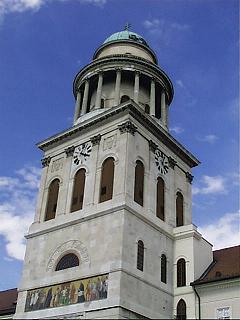
The dominating tower dates from the work here by János Páckh 1824-35. He continued the work of Jószef Ferenc Engel, who designed the beautiful library, but he is responsible for the tower alone. In fact this is the one and only place on the guided tour of the abbey where you are allowed to take photographs.
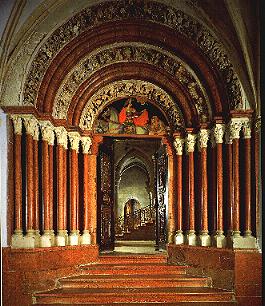 |
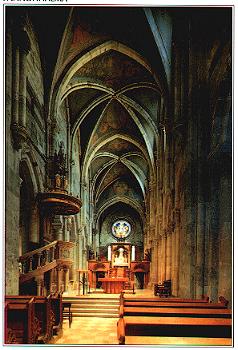 |
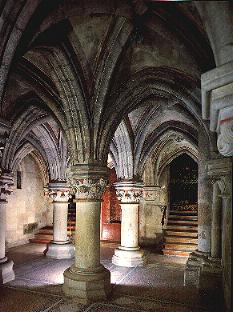 |
The interior of the church therefore comes as a big surprise, as much dates back to the earlier part of the C13 (circa 1224). In the cloisters is preserved a wonderful Romanesque doorway, yet much is Transitional in style to Gothic. The crypt is particularly interesting, in feel Romanesque but with pointed vaults.
The tour unfortunately does not linger long in the church, and often competes with a tour in Hungarian, German, or on the day we were there in Italian.
TIHANY
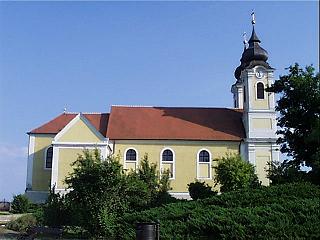 |
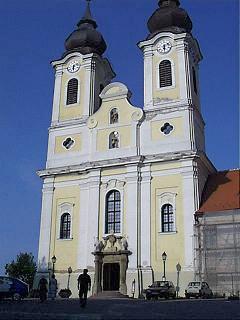 |
The abbey was founded in 1055 and its royal foundation charter is miraculously still preserved at Pannonhalma. This too was a Benedictine monastery. Its site made it important during the Turkish Occupation and most of the monastery and church were destroyed. The church was rebuilt 1719 - 1754, the abbey buildings to the south 1719-40. The twin towers are a beacon on the lake, and visible for miles around.
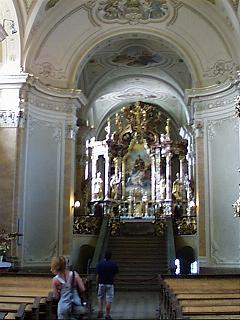
The interior I found to be a little disappointing. It consists of an aisleless nave of three bays and narrower chancel raised absurdly high.
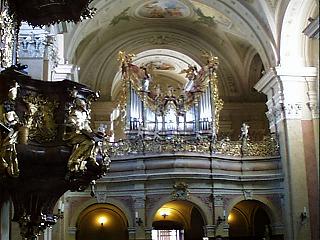 |
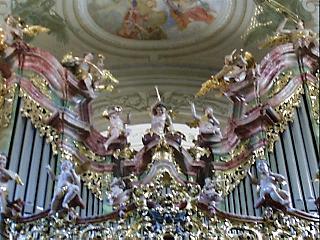 |
In fact the view back to the entrance is much more satisfying. The frescoes on the roof date only from 1890. The organ on the west gallery is smothered in cherubs, many playing musical instruments.
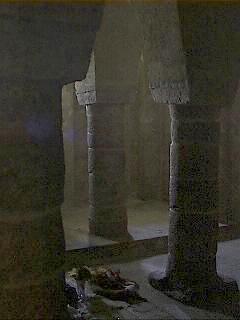
At the east end however the reason for the chancel being like it is is evident. Underneath is an early Romanesque crypt, probably dating from the foundation in the mid C11.
Despite its situation, there was no guidebook or history souvenir, not even any postcards on sale in June 2000. Yet the village is a tourist honey-pot, not only from people staying on the northern shore of the lake, but thanks to a ferry to the southern side a constant stream of day-trippers arriving by boat, bus and car. The church itself remains stubbornly closed bar the open west door into the vestibule under the gallery until 7pm when it opens briefly prior to evening service. It is missing out of earning millions of forints from these tourists, money which goes instead to the stall-holders all around the small streets of Tihany.
ZIRC
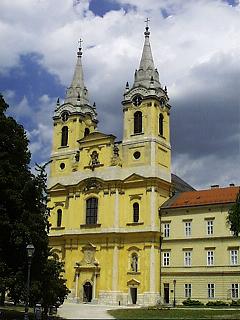
If I had a favourite, then this is probably it. Zirc was a Cistercian abbey, founded in 1182 by King Belá III. It was completely overrun by the occupying Turks in the C16, but the refounding of the abbey in 1659 ended in the murder of the abbot by Turks and another abandonment. The abbey was not refounded again until 1727, and the building of the church started in 1732. It was consecrated in 1752. It still dominates the small town which has grown up around it.
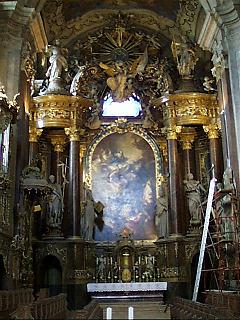 |
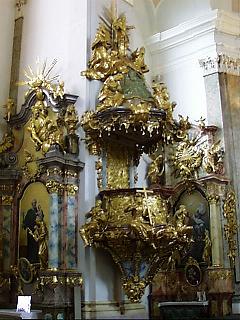 |
The interior has just emerged from a major restoration begun in 1997. It was discovered that the original baroque paintings survived under the late C19 decorative scheme and these have been restored. In June 2000 the interior still smelt heavily of paint and the final pieces of scaffolding were being taken away (still visible on the south side of the choir in the picture above). The end result is stunning.
The monastic buildings now house a natural history museum, but the library is another outstanding room and is shown on application. Full of rare books, it luckily survived destruction in 1944 when a German plane came through the roof. The fire was quickly put out and only a few books were singed!
ANDOCS
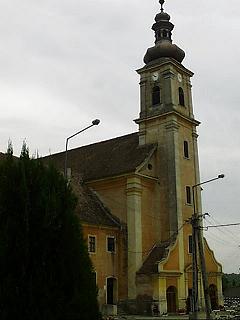 |
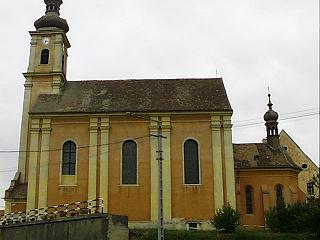 |
Some 25km south of Lake Balaton lies the small town of Andocs. Here there is a beautiful pilgrimage church which from outside looks to be another C18 baroque church. In fact much of it dates from c1510, and it was the church of a Franciscan monastery.
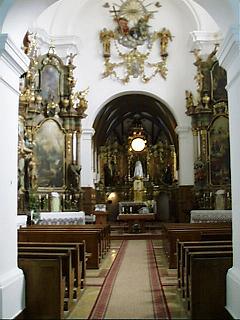 |
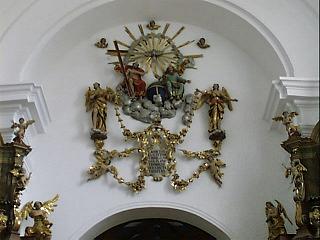 |
|
The interior has been restored in recent times and much of the dark and poor C19 decoration has been whitened out. These white walls display the C18 baroque fittings to their advantage. Closer inspection of the chancel however reveals the Gothic vaulting and apsidal form of the east end.
In June 2000 we were the only visitors, and we were pleasantly surprised to find the church open.
Back to the Hungary Pages Intro and Index